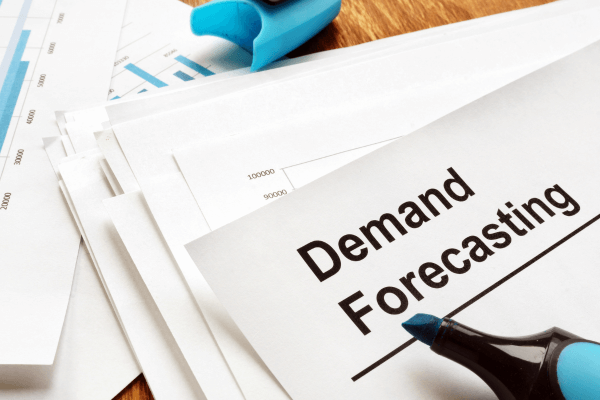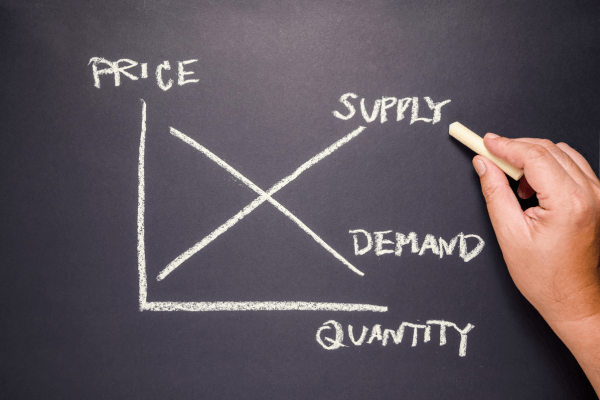Demand refers to how many units of your product or service customers will purchase over a given period. Calculating demand accurately allows you to determine production levels, staffing requirements, inventory levels, and more. An underestimation of demand could lead to stock-outs and lost sales while over-estimating could result in excess inventory carrying costs. In today’s competitive environment, getting demand forecasting right is important for maximizing profits and providing customers with a good experience. In this blog post, we will explore key techniques and factors that can be used to measure and calculate customer demand more precisely and listen to the voice of the customer.
Why Calculating Customer Demand Matters
Making wise business decisions and streamlining processes requires a thorough understanding of client demand. Businesses may schedule production, manage inventory, set prices, and make realistic sales projections that reflect what customers really want to buy by examining demand patterns.
Understanding the degree of consumer demand enables companies to maximize their price plan. There might be space to raise pricing and boost profit margins if demand is strong. Reducing pricing can encourage more sales in situations where demand is low. Better financial performance is obtained when prices are dynamically adjusted in response to variations in demand.
Inventory management is also informed by demand analysis. We are maintaining the right level of inventory on hand to guarantee that you can satisfy client demands without using up surplus funds on unsold goods. You may maximize efficiency and fine-tune inventory levels by monitoring sales velocity and predicted demand.

Production planning similarly benefits from demand analysis. Scheduling manufacturing runs based on expected customer demand improves capacity utilization while avoiding underproduction or shortages. Understanding demand cycles also allows staggering production schedules to smooth workflow.
Finally, realistic sales forecasts require accurately gauging customer demand. Setting achievable revenue goals prevents wasted resources from chasing impossible targets. Monitoring demand helps adjust financial projections as market conditions evolve. With customer demand as the foundation, companies can create pragmatic sales outlooks.
3 Methods to Estimate Customer Demand
There are several market research methods companies use to estimate customer demand. Surveys and focus groups are effective for directly asking target customers about their needs and purchase plans. Well-designed surveys and focus group questions can reveal helpful insights into consumer demand.
Analyzing past sales data and purchase history is another valuable approach. Looking at trends over time, seasonal fluctuations, and how demand changes in response to various factors provides useful demand intelligence. Statistical forecasting techniques can then be applied to sales data to predict future demand.
Businesses can estimate future client demand using a number of advanced forecasting techniques, such as
#1 Time series methods
Time series forecasting uses historical data over time to detect patterns and trends, which are then extrapolated into the future. Some common time series methods include:
- Moving Averages: The demand over a fixed period is averaged to smooth out fluctuations. The moving average is plotted alongside actual demand to visualize trends.
- Exponential smoothing: This method allows projections to adjust to changes more quickly by assigning more weight to more current demand data.
- Seasonal Analysis: Data is stripped of seasonal variables such as weather and holidays. Seasonality can then be added again in forecasts.
#2 Models of regression
Regression analysis is used to determine statistical correlations between variables such as pricing, promotions, and other variables and demand. A regression equation combines these demand drivers to forecast future demand.
#3 AI and machine learning
Modern AI algorithms can analyze vast amounts of data to find intricate patterns that conventional techniques overlook. By continuously learning from new data, machine learning models can increase the accuracy of forecasts.
Combining these methods enables the creation of reliable projections that combine several demand factors and make use of each method’s advantages. Companies ought to employ the strategies that are best suited to their particular circumstances.

Factors Influencing Customer Demand
Both internal and external factors impact customer demand. Some key factors that influence demand include:
Pricing and competitor pricing
How a company prices its products compared to competitors is a major driver of demand. Lower pricing relative to competitors will generally increase demand, while pricing products higher than competitors can dampen demand. Monitoring competitors’ pricing strategies is critical.
Market trends and seasonality
Demand from customers frequently varies according to cycles, seasons, and market trends. Certain products may have a spike in demand during popular trends or peak seasons, but a decline in demand during off-peak times. Demand forecasting can be more accurate when you are aware of the seasonality and market patterns specific to your sector.
Changes in customer preferences
Changes in consumer preferences, tastes, and habits strongly impact demand. There may be fluctuations in demand for particular items as client preferences change over time. Businesses can predict changes in demand by monitoring shifts in client preferences through market research and staying abreast of trends.
New product releases
The introduction of new products can significantly alter customer demand. A hot new product that disrupts the market may suppress demand for existing items. However, a new product line extension could also boost total category demand. Modeling the market impact of new product launches is key for forecasting.
External factors
External events and forces outside of a business’s control can significantly influence customer demand. Tracking and accounting for these external factors is crucial when estimating demand.
- Economic conditions
The state of the economy as a whole has a significant impact on company activity and consumer expenditure. During recessions, demand frequently decreases as incomes dip and uncertainty increases. Demand generally rises across a wide range of industries during times of robust economic expansion. It can be useful to keep an eye on leading economic indicators to predict changes in the business cycle.
- Government regulations
Changes in government policies, laws, and regulations can impact customer demand. The introduction of new regulations can alter costs and restrict business operations. Loosening of regulations can enable new opportunities and demand. Firms need to stay on top of regulatory changes and understand the implications.
- Demographic shifts
Demand is affected by demographic characteristics like age, income, education, and population growth. An aging population may drive more demand for healthcare products. Increasing education levels can increase demand for digital devices and software. Tracking demographic data allows businesses to identify such trends.
- Social and cultural trends
Shifting social norms and cultural attitudes can shape customer demand over time. For example, increased environmental awareness has driven demand for sustainable and eco-friendly products. Fashion and lifestyle preferences also evolve across generations. Identifying social trends helps anticipate demand changes.
4 Tips to Improve Accuracy in Calculating Customer Demand
Accurately estimating customer demand is crucial for business success across functions. Better demand forecasts directly translate into improved business performance and health. Conversely, poor estimates of customer demand can seriously harm a company. While forecasting is challenging, dedication to continuous improvement will boost the quality of demand data. With realistic estimates, you can confidently plan operations and strategy for business success.
Here are four tips for you to get accurate customer demand:
#1 Cross-checking estimates
It’s crucial to double-check your estimates using several calculating techniques to make sure you have the most accurate picture possible of client demand. Blind spots may result from depending exclusively on one forecasting method.
Comparing demand projections generated by various techniques and searching for consistency is one strategy.
For example, you may estimate demand based on historical sales data and also do a separate forecast based on website traffic analytics. If the two estimates are relatively aligned, you can have more confidence you are in the right ballpark. If they diverge significantly, take a closer look at the underlying assumptions and data inputs.
In addition to using different forecasting methods, it’s a good idea to check your demand estimates against the real demand periodically. Compare your projected sales for the upcoming month, for instance, with the actual sales after the month. If your forecasting process reveals a notable departure from reality, review it.
You can improve your strategies and predict client demand more accurately by cross-checking demand estimates from various approaches and validating forecasts against actual outcomes. Accurate demand projections are essential for making important business choices.
#2 Updating forecasts
Demand projections must be reviewed and updated to be sure they stay correct throughout time. Re-examining projections frequently—for example, every month or every quarter—is crucial. Making a forecast only once and not consulting it again can result in bad business decisions.
If there have been any recent developments that could affect client demand, consider these when assessing forecasts. For example, have your prices changed? Has a new competitor entered the market? Have customer preferences shifted? Tracking influencing factors in real-time allows you to understand how demand may be changing.
Look for opportunities to automate data collection that are relevant to forecasting. This could include using analytics software to pull in website traffic data, setting up integrations to collect point-of-sale information, or building a simple dashboard to monitor key demand drivers. The more frictionless you can make data collection, the easier it will be to update forecasts continuously.
Overall, forecasts are not set in stone. They need to be reviewed and adjusted on an ongoing basis to remain useful. Building regular reviews and automating data flows are two best practices for keeping demand estimates up-to-date. This discipline is required to get the most value out of forecasting.
#3 Avoiding biases
When estimating customer demand, it’s important to avoid biases and wishful thinking that may skew your forecasts. Some common biases to watch out for include:
Remove wishful thinking and assumptions – Don’t rely on hunches or make assumptions. Base your estimates strictly on objective, empirical data rather than gut feelings. Avoid inflating numbers because you “think” demand will be higher. Stick to factual data.
Focus on objective data vs. gut feelings – Forecasting based on emotions or intuition often leads to inaccurate estimates. Depends only on hard facts, such as survey findings, site analytics, and sales figures. Keep your desires and feelings out of the forecast.
Keep an eye out for recency bias and anchoring – Recency bias refers to giving more weight to the most recent data, while anchoring refers to placing too much emphasis on one data point. Avoid these by looking at demand data over a long time period. Don’t anchor to a single big sale or recent spike.
#4 Managing uncertainty
Accurately estimating customer demand requires properly accounting for the inherent uncertainty in forecasting future needs. Several techniques can help:
Use confidence intervals and probability ranges – Rather than forecasting demand as a single number, use a range of values along with the probability they will occur. This provides insights into the variability around estimates.
Account for variability and fluctuations – Understand that demand often fluctuates up and down over time rather than following a smooth trajectory. Build this variability into forecasts through methods like moving averages.
Scenario planning for high/low projections – Develop different demand scenarios based on potential events and influences. This avoids anchoring on a single projection and prepares for different environments. Stress tests worst and best-case scenarios.
The future is never certain, but using structured approaches to manage uncertainty allows businesses to make informed plans and decisions despite the inherent unpredictability of demand. Continuously monitor the market environment for changes that alter the probability of scenarios. Adjust forecasts quickly when new information arises.
Wrap Up
Accurately gauging customer demand is vital for business success. Companies can gain valuable insights into market trends through surveys, data analysis, and advanced forecasting techniques. Understanding factors influencing demand, from pricing to consumer preferences, is crucial. Implementing strategies to improve accuracy, like cross-checking estimates and managing uncertainty, is key. Leveraging tools like Octoparse VOC enhances demand forecasting, guiding businesses toward data-driven decisions and sustainable growth in today’s competitive market.



